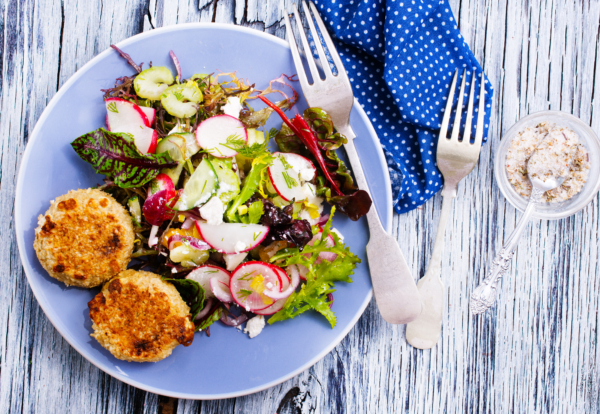
Summer is a time for fun, relaxation, and making memories – sunshine, family, beach reads, you name it! But as fall approaches, we might (and by “we,” I definitely include myself!) realize we indulged a little more than usual.
No shame in that game! Nourishing Lab is all about helping you get back on track with your health goals, not making you feel guilty. Every season offers opportunities for enjoyment, and summer is no exception.
But fall brings a shift. Whether it’s returning to work after vacation or juggling school schedules, our routines change. Finding time for healthy meals can feel like a challenge in the face of time constraints.
Travel woes? Are you among those who travel to drop off teens or navigate unfamiliar restaurant options? Figuring out healthy eating on the go can be tricky.
Here’s how I get back on track: After any travel period, I return to the Golden Goddess Plate to structure my meals. A Golden Goddess Smoothie is also my go-to for starting the day with balanced blood sugar.
- Appetizers: Choose one that’s primarily vegetables or fish, like lettuce cups, edamame, or shrimp cocktail. Avoid fried or breaded appetizers (including say, brussels sprouts given the fried buffalo wing treatment).
- Soup: Broth or vegetable bases are your best option. Avoid heavy cream.
- Bread: Ask if gluten-free bread is available. If not, ask them to hold off on dropping the bread baskets, which are way too tempting. (It’s your choice!)
- Salad: Choose arugula, spinach or romaine greens with veggies, without cheese and croutons. Opt for olive oil and balsamic dressing or olive oil with fresh lemon. Many dressings have hidden preservatives and unhealthy fats. Not all salads are created equal; they can contain inflammatory foods. Taco salad, chef salad, and buffalo chicken salad are examples to keep out of your diet.
- Side dishes: Choose steamed veggies, fruit or baked sweet potato (sweet potato fries if you need a fix).
- Dinner: Prime rib, fettuccine alfredo, fried chicken and stuffed shrimp are heavy meals that may make you feel bloated or even a bit sick. Look for options that are baked, broiled, grilled, poached, roasted or steamed.
- Dessert: If you’re still hungry after a meal, consider splitting dessert. You can also choose fresh fruit or sorbet as a palate-cleansing option.
NOTE: Many restaurants (especially in the United States) serve large portions. Let’s take a look at NL’s exclusive Portion Size Guide. It’s helpful to remember that you have the freedom to choose how you want your plate to look.
Portion Guide

Know Your Serving Sizes
Portions have become supersized over the years. As a result, we’re generally no longer aware of how much food we really consume. Here’s a helpful guide to understanding portions.
Proteins
5-6.5 ounces daily
1 serving protein = the size of your palm (or 3 ounces)
Carbohydrates
5-8 ounces daily
1 serving grain and starchy carbohydrates = size of a cupped hand (or ½-1 cup)
1 serving fruit = the size of a closed fist (or ¾-1 cup)
Vegetables = unlimited quantities (but at least 2-3 cups daily). Great examples: sweet potato, corn, green beans and peas.
Healthy Fats
5-7 teaspoons daily
1 serving oil = thumb size
1 serving nuts/seeds = closed cupped hand or ¼ cup
1 serving avocado = ½-1 whole
1 serving olives and shredded coconut = closed cupped hand or ¼ cup.
2 tablespoons almond butter or 2 ping pong balls


Share this blog post
You may also like
Tick Bites: The Perils Of Delayed Detection of Lyme Disease and How Timing is Key

Beneath the Tap: Unmasking the Dangers of Lead Lurking in Our Water Supply

Hidden Factors Affecting Blood Sugar Balance

Golden Glow Essentials: Holiday Gifts for Mind, Body, and Soul

Everyday Sources of Heavy Metals & What You Can Do

Beach Bod on the Go!

